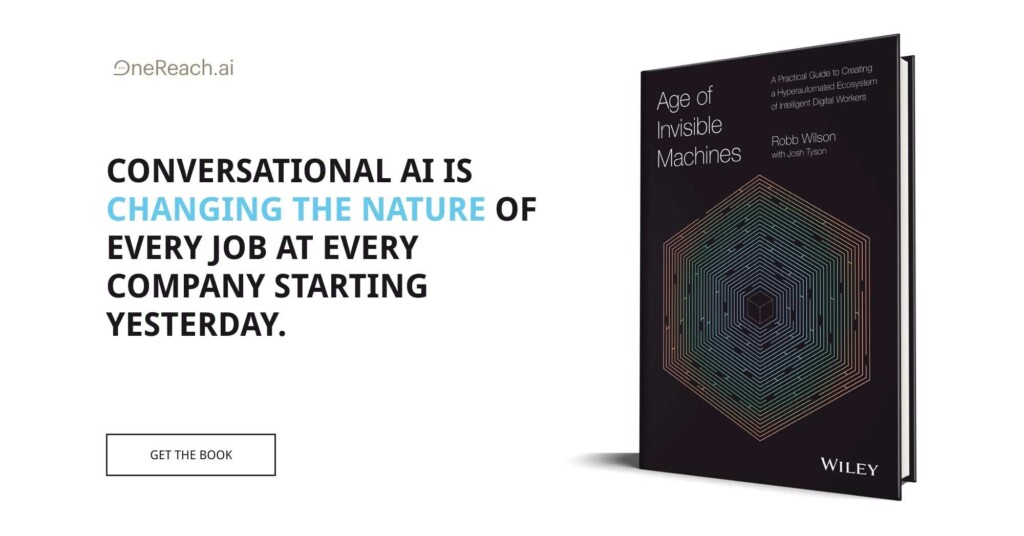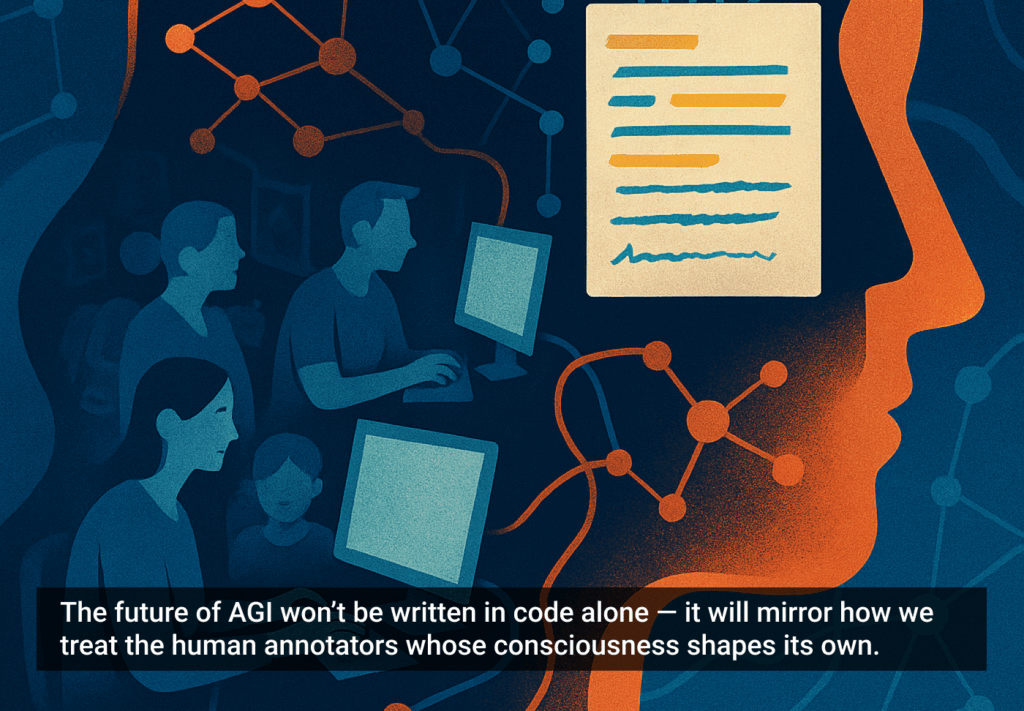Conversational AI is a revolutionary technology enabling people to interact with machines in natural language. It facilitates a drastic shift in how we interact with man-made objects, creating a potential ecosystem of seamless cohesion between man and machine. It augments not just a single task, but in how humans solve problems, making previously inaccessible technology available to the masses with no learning curve. As Alex Halper, Conversational AI COO at Deloitte says, “conversation is the only interface everyone already knows how to use” (Halper, 2021).
This may explain why “74% of organizations say that conversational assistants are a key enabler of the company’s business and customer engagement strategy and 76% have realized measurable benefits from voice and chat assistants” (Press, 2019).
While there are seemingly infinite business processes this technology can augment, one that is already in the early stages of disruption is customer support. This article dives into how conversational AI is used for customer support in both contact centers and sales conversion.
Contact centers
Contact centers are extremely costly parts of most companies’ customer support strategy. They often have huge staffing requirements coupled with turnover of up to 44% (CallMiner, 2019). To make matters worse, the pandemic has caused a swell in contact center demand (Gausden, 2020). Conversational AI augments contact centers to exponentially scale their capacity in serving customers without any additional human staff. These bots often handle full customer conversations without the need for any human assistance, achieving automation rates of up to 80% (Deloitte, 2019). This leads to savings from staff reduction, or, more commonly, eliminates the need to grow staff to keep up with increasing customer demands.
Beyond the obvious financial incentives of this augmentation, conversational bots can provide much needed relief for organizations that deploy them. These bots work 24 / 7 with no bathroom breaks or vacation days and can easily handle a majority of low hanging fruit issues. This means human agents will shift to handling more interesting customer queries, increasing both agent and customer satisfaction. The improved satisfaction of agents leads to less turnover, and the increase in customer satisfaction leads to greater loyalty (Hall, 2020).
Even when Conversational AI does not handle the entirety of an interaction, it still provides incredible value by automating up front authentication and query routing / due diligence. These menial tasks can mean millions in savings for large fortune 500 companies and millions of minutes saved for queuing customers (Press, 2019).
Conversational AI also augments the way human agents perform their responsibilities. With a concept called human-in-the-loop, agents can observe bot conversations live and intervene when necessary. The bots can also autonomously ask for help with a customer query from an agent that specializes in the domain of the question. Once the human agent provides the correct answer for the customer, the bot learns, and next time can handle the same query on its own. The agent can then return ownership of the conversation to the bot who can carry on with customer support. This new agent superpower creates a hybrid workforce, enabling human agents to work together with bots to form a far more efficient process than ever achievable before.
This hybrid workforce also works in the opposite direction. Conversations owned by human agents can be observed by their bot colleagues who provide useful data driven assistance during customer engagement. These bots are aptly named whisper agents, as they react to real time conversations with helpful knowledge articles, response suggestions, and user insights to guide the human agent towards an optimal customer interaction. These agents assist capabilities enable more personalized and engaging conversations with customers. For example, a bot may note that it is a customer’s birthday and prompt the agent to acknowledge this and provide a celebratory discount coupon for the agent to share.
Sales Conversion
Sales conversion will drastically change with the adoption of conversational ai solutions. Let’s take for example account management in B2B businesses, and customer engagement for B2C businesses.
An average account manager for a fortune 500 firm can manage 10 – 20 accounts per year (Sakas, 2018). They typically devote 8 hours a day divided between these accounts, juggling multiple client fires simultaneously. Engaging with each customer to either answer their questions or upsell on diversified services can be incredibly challenging for account managers to navigate effectively (Sakas, 2018). They must choose between which clients to prioritize each day, growing some relationships and allowing others to dim. Even more problematic for companies is the additional expense to take on new clients. As a company grows, they must hire more account managers or risk key relationships to suffer. However, with conversational AI, sales can scale infinitely, enabling any business to grow current accounts, and take on new ones. These conversational solutions can leverage data to contact clients in the method they prefer (calling, texting, WhatsApp, email, etc) at the exact time clients are most likely to pick up, about the topics most interesting to them. Using customer usage data, a conversational solution can be triggered to prompt a business to upgrade a particular service. For example, if S&P Capital IQ, a financial due diligence platform, has a client attempting to access research reports, a conversational solution can reach out autonomously and nudge the user towards buying them. The bot can answer questions about the research papers available, the benefits of the research, and even allow the client to pay for the reports, all through conversation.
Tailoring every interaction with customers at scale leads to greater conversion rates and eases the burden on human account managers. Account managers will now be able to augment their services with a larger number of clients and be more prepared with data driven insights collected by the autonomous conversational agents.
This same personalization and engagement strategy can be used for B2C customer engagement. Research shows that using conversation in place of, or in congruence with, a website / mobile app, customers feel a stronger relationship with the company (Smith, 2018). This translates to higher sales conversion rates while simultaneously reducing customer acquisition costs. The same techniques in the account management scenario can be leveraged for individual consumers. Conversational AI enables what can be thought of as personalized account managers for every individual customer, ushering in a new age of relationship building and sales techniques,
I built a quick example of a signup process using a conversational interface for a fictitious meal delivery service, Clean Plate Club. Scan the barcode below to try it out:
This is a very basic example of how conversation can be used to collect information and convert a customer while also making the process fun and inviting. For reference, I built this example using the OneReach.ai platform in about 90 minutes and without having to write code.
The strategic opportunities and risks this process augmentation entails
Conversational AI creates many strategic opportunities both externally and internally
Externally it serves as a gateway for large and small companies alike to service customers in unique and valuable ways without requiring a mass hiring spree. Companies can finally achieve the long sought-after goal of providing excellent, personalized customer service across all channels at scale, without breaking the bank. This is known as omni-channel experiences, and it is a powerful opportunity to nurture customer relationships in ways competitors can’t compete with. Companies will be able to create a consistent digital brand through channels like phone calls, texting, social media, smart speakers, mobile devices, email, and in person kiosks. When companies can reach customers in their preferred channel, at their preferred time, there is an apparent advantage over more limited competitors.
It is important to note that as a new user interface, Conversational AI’s strategic opportunities extend way beyond traditional communication. The strategic opportunities will grow as other technologies like AR/VR, wearables, IoT sensors, and robotics become more pervasive and accessible. Investment in conversational AI builds on the additional potential of future tech adoption, enabling these advanced tools to become accessible to the layman.
Internally, Conversational AI allows companies to make their existing resources more productive and to reinvest both time and money savings towards operational efficiencies, employee wellbeing, or any number of other projects. This gives companies the freedom to set more ambitious company goals, without the burden of wasting resources on low hanging customer queries. Employee satisfaction will increase as their jobs become more interesting (Deloitte, 2019). This in turn will decrease employee turnover and improve company culture. In this way conversational solutions will fundamentally transform the operational efficiency of a company’s workforce.
Any regional deployments of these solutions also unlock global strategic opportunities. Conversational bots built in the proper modular form can be reused across regions and language, taking into account all of the regional requirements and process differences. This is in stark difference to training humans who hoard tribal knowledge that cannot be replicated without a significant amount of time and effort. This allows companies to be nimbler in delivering digital transformation and adapting to customer requirements more quickly locally and abroad.
While conversational AI brings massive strategic, financial, and operational advantages over traditional business processes, it does not come without risk.
A bad rollout is a major risk in customer trust and therefore existing revenues. Unfortunately, this happens often with conversational AI technologies because companies don’t fully understand the right way to use them (Halper, 2021). The most common example is when a company creates an FAQ bot on their website. FAQ bots are seen as simple, effective, and cheap to prove the concept of conversational support. However, studies have found that these FAQ bots are far less effective than FAQ pages already on a company’s website, aggravating customers who lose patience with these tools quickly (Goebel, 2017). This should not be taken lightly. Once a customer has tried your conversational solution and determined its ineffective, they are significantly less likely to use the tool again (Halper, 2021). This means that if the initial rollout is botched, then the projected financial efficiencies and customer satisfaction improvements may not be met even after improving the experience.
There is also a risk of investing in the wrong conversational ai technology. There are thousands of vendors who all claim to have enterprise ready platforms to build customized conversational solutions. This is simply not true. A significant majority of vendors do not live up to the promise of reliable and scalable technology. This makes it dangerous to choose a vendor, especially because these companies rarely have the skillset to competently evaluate vendors against each other. It is extremely easy for a vendor to create a video demo of an example experience that is not able to be reproduced as a production deployment (Halper, 2021). Moreover, once a vendor is chosen and a solution is in place, it can be costly to switch vendors. With an ever changing landscape of conversational AI capabilities, companies’ risk being locked in with a solution that will no longer fit their needs just a year down the road.
Arguably, the largest risk in implementing conversational ai is the reaction of a company’s employees. Anytime automation is brought into a firm there will always be skepticism and fear over job security. This can make it extremely difficult to gain buy-in throughout the firm and to successfully capture the value the technology offers. This risk can be mitigated by bringing in a wide range of stakeholders across the business early on in the process. When employees feel a sense of ownership and control over a potentially threatening technology, there tends to be a faster acceptance of the changes that are inevitably coming (Walby, 2019). Without the buy-in of the employees who are responsible for the conversational AI deployments, the chances of success are slim.

The implementation challenges you foresee and how to overcome them
There are a number of implementation challenges to a successful conversational AI deployment.
The first challenge is that most enterprises are still reliant on legacy systems that are incredibly difficult to work with. These systems often come without API’s and have customized in-house builds requiring unique methods of interaction. This makes these systems inaccessible to a more modern tech stack that requires constant transfer and updating of data. Equally troubling, legacy systems will typically be owned by a single manager who is the gatekeeper towards any utilization of the system (Halper, 2021). The system manager has extremely limited time to dedicate towards implementation of additional solutions outside of the expected scope of maintenance and upgrades that legacy systems constantly demand (Halper, 2021). Legacy systems therefore cause massive constraints in both functionality of the conversational solutions and in the timelines of implementation. To deal with legacy systems it is imperative organizations choose initial use cases that rely on as few of these systems as possible, and that these systems can be leveraged for future use case expansion. This provides the best bang for your buck in dealing with the headache.
The second challenge towards implementation is a lack of data. Conversational solutions require a significant amount of intent training data for knowledge models to properly recognize the myriad of customer goals that it will encounter. Without this data the ramp up in performance in natural language processing (NLP) will be stunted. Instead, we would have to rely on live data streaming through the system and accept lower confidence from the language models on first release. Beyond the intent data, companies don’t usually store data on what their users are asking for. This makes it challenging to choose the right use cases on the first attempt. Instead of relying on user data, companies often rely on the gut instincts of the employees in the domain the conversational solutions will be built for. Even if a company does have data on what their users ask for, they rarely have up to date process maps of the use cases to be deployed.
Contrary to popular belief, much of a conversational AI solution is actually reliant on a flexible logic tree. This logic tree informs the conversational AI on which direction to steer the conversation depending on what problem the user is trying to solve. Without reliable process maps, companies must perform deep dives with process leads on each use case. This can be a timely and expensive, though a worthwhile process that forms the basis for how the conversational AI will behave with customers. This challenge can be turned into a strength, as less process maps and data mean that companies will have less barriers in optimizing processes for automation, rather than replicating an inefficient process.
A third challenge is the commitment to maintaining and optimizing the solutions. Conversational AI solutions cannot just be plugged in and let loose. They must be tended to and constantly updated to change with customer expectations and company requirements. This means dedicating resources towards content management, architecture maintenance, performance analytics, UX design improvements, NLP training updates, channel integrations, and more. This is not a small investment and for a successful implementation a dedicated team must form to ensure its continued success. This team will have to be cross functional between IT, business, design, and any other relevant functions for the use cases that are chosen. This type of team formation is not common in enterprises for long term commitment. Companies must adjust the way they do business and embrace a new way of working to overcome the challenge of maintaining and growing the success of a conversational solution.
A fourth challenge is the lack of talent available in the industry. A former Conversational AI leader at Deloitte put it this way, “there are no conversational AI experts yet. Even those at the cutting edge of the field are still looking through a keyhole trying to discern what the whole house looks like” (Tyson, 2021). Scarce resources mean it is difficult to find and to hire experienced conversational AI specialists. Companies may either have to fail fast and break things to learn what works for them or make sizable investments in partnerships with consulting firms that can deploy solutions with them.
Finally, a fifth challenge will be platform limitations. Clients and platform vendors alike are just scratching the surface on what conversational ai is capable of. This means whatever vendor a company chooses must be based on an open architecture system to keep up with the long-term challenges of conversational ai implementations. Open systems allow for lightweight technical integrations, enabling organizations to adopt new technologies as they come out. However, Ratner says, “organizations aren’t using open systems because they don’t know that they exist. Coming into the chatbot space, they’re relying on multiple closed systems because each group within an organization is adopting a different type of a build on a different closed platform” (Tyson, 2021). Choosing multiple closed system vendors for different parts of the organization is expensive and inefficient. For every new capability needed an organization will have to buy and integrate a new solution. Ratner continues, “with closed systems, you don’t have the ability to create your own custom functionalities—you can only use what the vendor gives you” (Tyson, 2021).
Conversational AI is a promising technology that is being rapidly adopted in nearly every industry. Customer support is among the first business processes that will be entirely disrupted by the technology and it’s clear why. Despite the implementation challenges, and risks, the strategic opportunities and tangible benefits firms are beginning to enjoy is evidence that the delta in performance absolutely justifies the costs. There will be changes in financial, operational and social models with the advent of this technology. In my estimation these changes are for the better.
References:
- CallMiner (2019). Call Center Statistics You Should Know. [online] CallMiner. [Accessed 1 Apr. 2021].
- Hall, N. (2020). Contact Centers Don’t Need To Be Cost Centers: Why Arming Agents with a Full View of Customers is Worth the Effort | CustomerThink. [online] customerthink.com.
- Press, G. (2019). AI Stats News: Chatbots Lead To 80% Sales Decline, Satisfied Customers And Fewer Employees. [online] Forbes. [Accessed 1 Apr. 2021].
- Halper, A. (2021). Conversational AI in Enterprise. 20 Mar.
- Tyson, J. (2021). Open vs. Closed Systems: Why Technology Thrives with Open Architecture. [online] UX Magazine. [Accessed 1 Apr. 2021].
- The next wave of customer and employee experiences Q 4 2 0 1 9 2 C O N V E R S A T I O N A L A I. (2019). [online].
- Sakas, K. (2018). Agency benchmark: What’s the ideal number of clients to have? [online] Sakas & Company. [Accessed 1 Apr. 2021].
- Smith, A. (2018). Three Ways AI Can Help Build Customer Relationships. [online] Forbes. [Accessed 1 Apr. 2021].
- Goebel, T. (2017). Why you Can’t Just Convert FAQs into a Chatbot 1:1. [online] Medium. [Accessed 1 Apr. 2021].
- Walby, T. (2019). Top 5 ways to prepare your workforce for the AI revolution. [online] Europeanceo.com.








